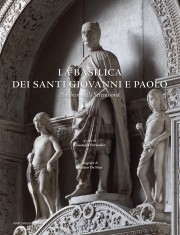
La basilica dei Santi Giovanni e Paolo. Pantheon della Serenissima
La basilica dei Santi Giovanni e Paolo. Pantheon della Serenissima is the first volume in the “Venetian Churches” series published by Marcianum Press in collaboration with the Giorgio Cini Foundation Institute of Art History. The series has been created with the aim of documenting, large religious buildings in Venice according to the latest, most rigorous scholarly standards. These key landmarks in the artistic, cultural and civil history of the Serenissima are the custodians of immense artistic heritages, only partially known
and studied. A further aim is to make public opinion aware of the need to protect and use unique spaces that are an essential part of the Italian national heritage. The first book is dedicated to the enormous Dominican Basilica of Santi Giovanni e Paolo, second only in importance to St Mark’s for its size and role in the life of Venice. The basilica contains the bodies of 25 of the 125 doges of the Venetian Republic. They are celebrated in monuments and tombs, whose artistic magnificence makes the basilica one of the most useful places for studying the history of Venetian and European art over seven centuries. In the field of sculpture we find highly significant works by artists such as Nino Pisano, Pietro and Tullio Lombardo, Alessandro Vittoria, Giuseppe Maria Mazza, Gianmaria Morlaiter and Giovanni Bonazza, while in the field of painting there are masterpieces by Giovanni Bellini, Lorenzo Lotto, Cima da Conegliano, Paolo Veronese
and Giambattista Piazzetta. The basilica is thus an immense treasure house of great significance for Venice. Published fifty years after the only previous monograph, this book is edited by Giuseppe Pavanello, who coordinated a group of Italian and foreign specialists in order to make complete updated entries of all the works of art in the basilica.
The cataloguing has been accompanied by a new, complete photographic campaign conducted by Matteo De Fina, which took over a year and required extremely sophisticated photographic instruments.
Consequently, a specific feature of the book is its two complementary functions as a scholarly work and at the same time a splendid volume of art photography. This twofold spirit has a single
